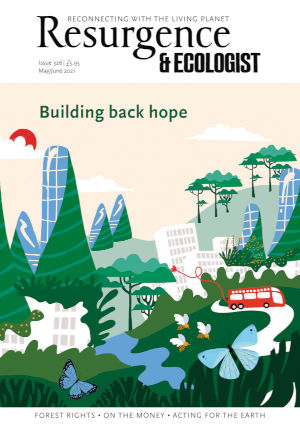Sonia Shah’s book is a prescient and timely debunking of everything you thought you knew about migration. Shah’s use of her own experience living as a second-generation migrant, interwoven with stories of people who have moved, migration in Nature, and the history of science, all contribute to a layered understanding of movement on a changing planet. Rather than treating the history of people on the move as separate to migration among animals and plants, Shah ties the two stories together, easily demonstrating that migration is not only a natural and innate response to the climate crisis – it is a beneficial one. She explains most poignantly, “We’ve constructed a story about ourselves, our history, our bodies and the natural world around us in which migration is the anomaly. It’s an illusion. And once it falls, the entire world shifts.”
The book opens by addressing how science has contributed to the misconception that migration is a destructive force. From ecologists and conservationists to politicians, migration in all species is considered to be disruptive, dangerous and a threat to natives of every kind. Yet this idea is founded on centuries-old scientific notions of belonging and a need for categorisation. Shah notes that we are taught that “plants, animals and people belong in certain places.” She addresses the current political context by tearing down common myths about people who move and the rise of far-right populism. The importance of picking apart these false narratives about migration, and their relationship to racial discrimination, cannot be underestimated, given the context of the Black Lives Matter movement, which is occurring simultaneously with an increased union of people calling for action on the climate crisis.
What Shah points out is that the climate crisis is often considered the sole domain of the field of science. The solutions are scientific, and the evidence is scientific. But she makes clear that scientific history has been rooted in the political constructions of racial identities and a rigid misunderstanding of borders as unmoving objects. In a chapter dedicated to destroying the legacy of Linnaeus – the 18th-century ‘father of taxonomy’ – Shah shows how the categorisation of our people as ‘us’ and ‘them’ has continued to influence our understanding of migration as a whole. Her depiction of Linnaeus as a stubborn, sex-crazed, arrogant scientist, a homebody who refused to learn the languages of his subjects and grossly exaggerated his own findings, is completely at odds with the way that the history of the Linnaean system is celebrated. What she demonstrates is that modern taxonomy was founded on the dehumanisation of people of colour, which was convenient for colonial powers.
Looping back to our present reality, she draws together how geopolitical interests have conspired to make borders that were until recently only defined by invisible lines into very real and physical obstacles. Walls, gates and fences fortified by weapons and technology are an increasing occurrence across the globe. While migration may be made horrendously dangerous by these measures, it will nevertheless continue to occur, particularly as the planet continues to change.
Where Shah stops short is in providing us with a clear idea of how we can flip narratives around migration and ensure that the rights of people on the move are protected. For campaigners and activists the book poses more questions than it provides answers. But its value lies in the fact that it posits these questions at all. It is here that those of us who are interested in ensuring that all people on the move are protected can build on the knowledge that Shah has provided us, and find meaningful ways to connect action on climate with migrants’ rights. What is needed is to “turn migration from a crisis into its opposite: the solution”, and it’s clear that work must start immediately.






